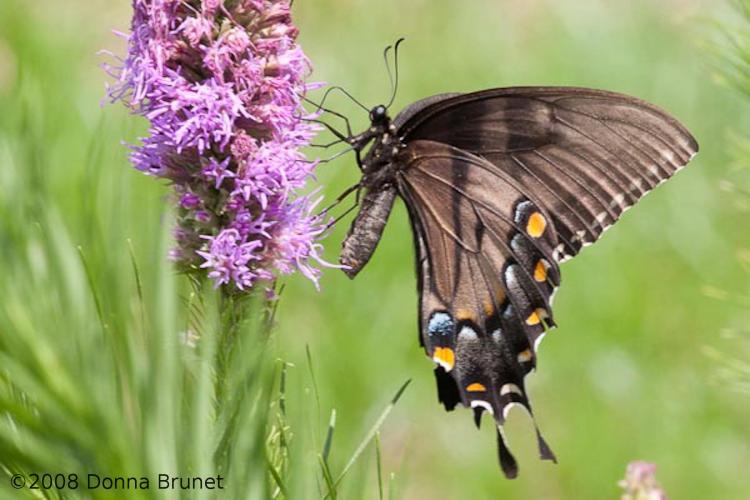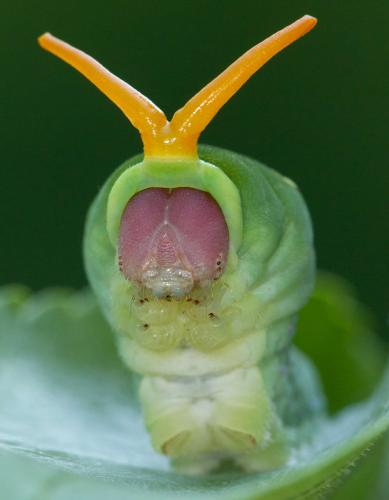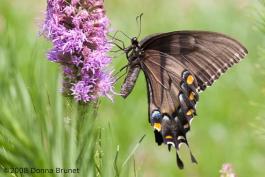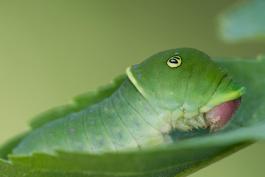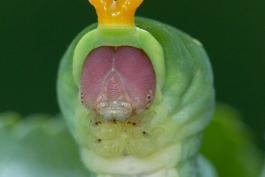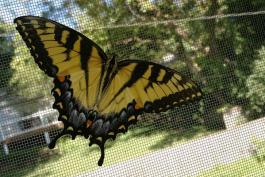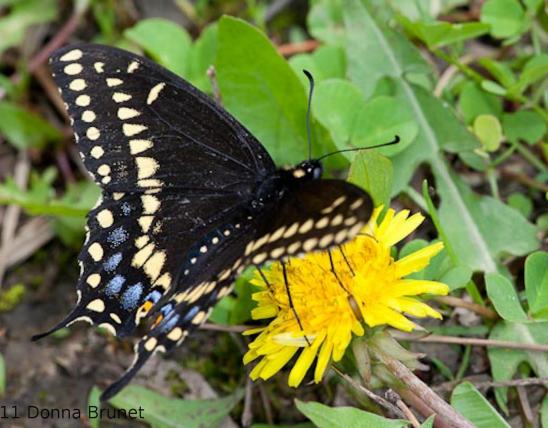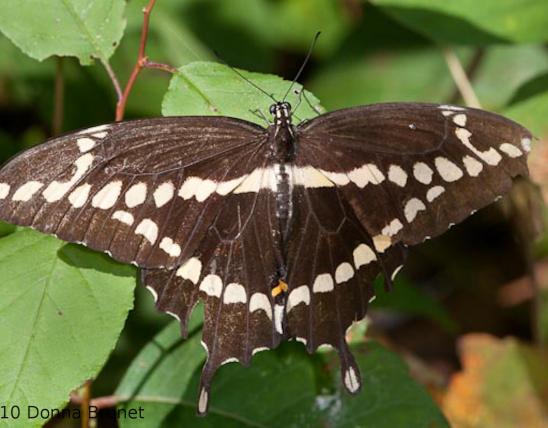
The eastern tiger swallowtail is Missouri's only swallowtail with yellow and black stripes. Some females are yellow with black stripes, similar to males, but others are black with darker black stripes. Both female forms have blue scales on the dorsal (top) side of the hindwings. Dark-form females do not have two complete rows of orange spots on the lower side of the hindwing.
Larvae are bright green and have two large eyespots on the thorax behind the head. Like other swallowtail caterpillars, when disturbed, they rear back and evert an osmeterium, a stinky, orange, forked gland that deters predators.
Wingspan: 2½–4½ inches.

Statewide.
Habitat and Conservation
Adults may be found flying in forests, fields, and gardens. Look for the caterpillars on their preferred food plants.
Food
Host plants for the larvae include hop tree, tulip tree, and various species of ashes, apples, and cherries. Adults drink nectar from a variety of flowers. Males are more likely than females to “puddle” (sip liquid and accompanying salts from puddles or damp soil). They transfer minerals to females during mating, which helps the females to lay more eggs. It also increases the survival chances of the young.
Status
Breeding resident.
Life Cycle
Adults fly from late March into October. Researchers have learned that males prefer the yellow females, but that dark-form females seem to survive longer, giving them time to lay more eggs. The dark females are found only where their range overlaps that of the pipevine swallowtail, which looks very similar. Pipevine swallowtails contain acrid body juices, making them unpalatable to predators.
Human Connections
Economic factors are often how we judge the “importance” of something. Still, the breathtaking sight of several huge yellow tiger swallowtails fluttering around a flowering shrub transcends mere economics: It inspires us.
Ecosystem Connections
The caterpillars are herbivores that graze on vegetation. The adults serve a role in pollination. All stages provide food for predators.

